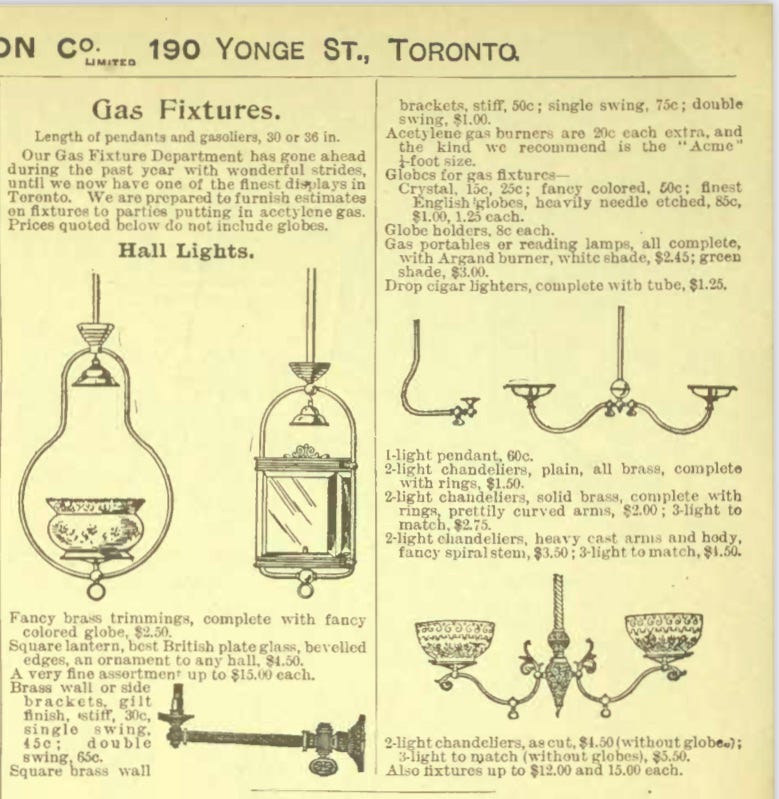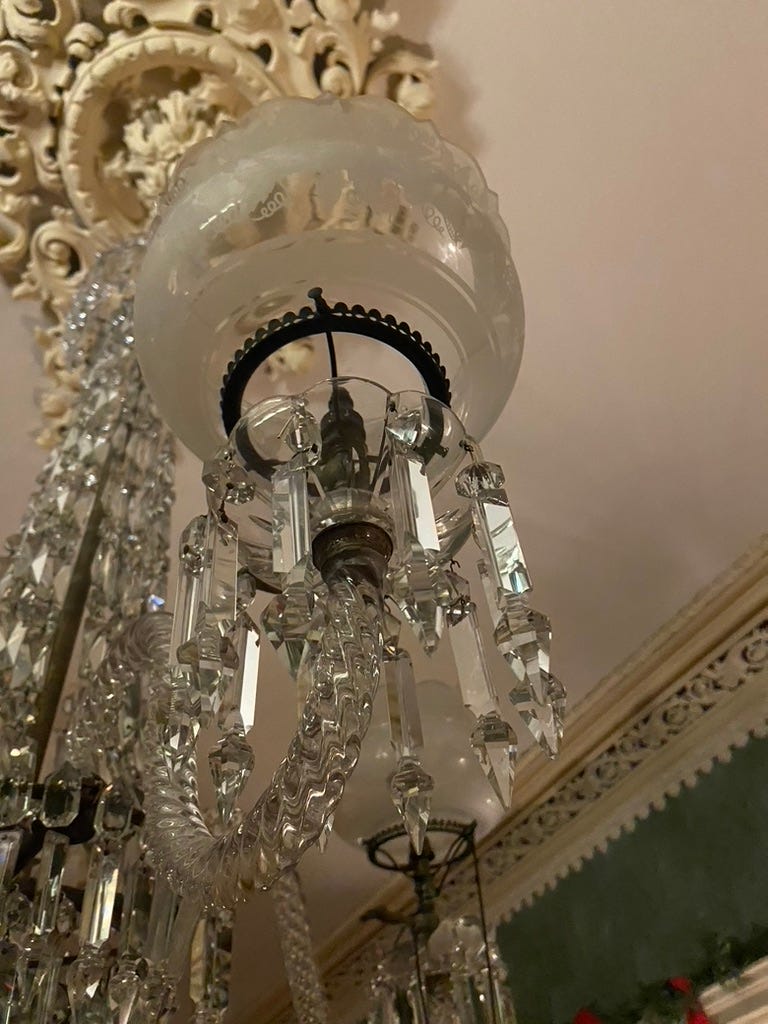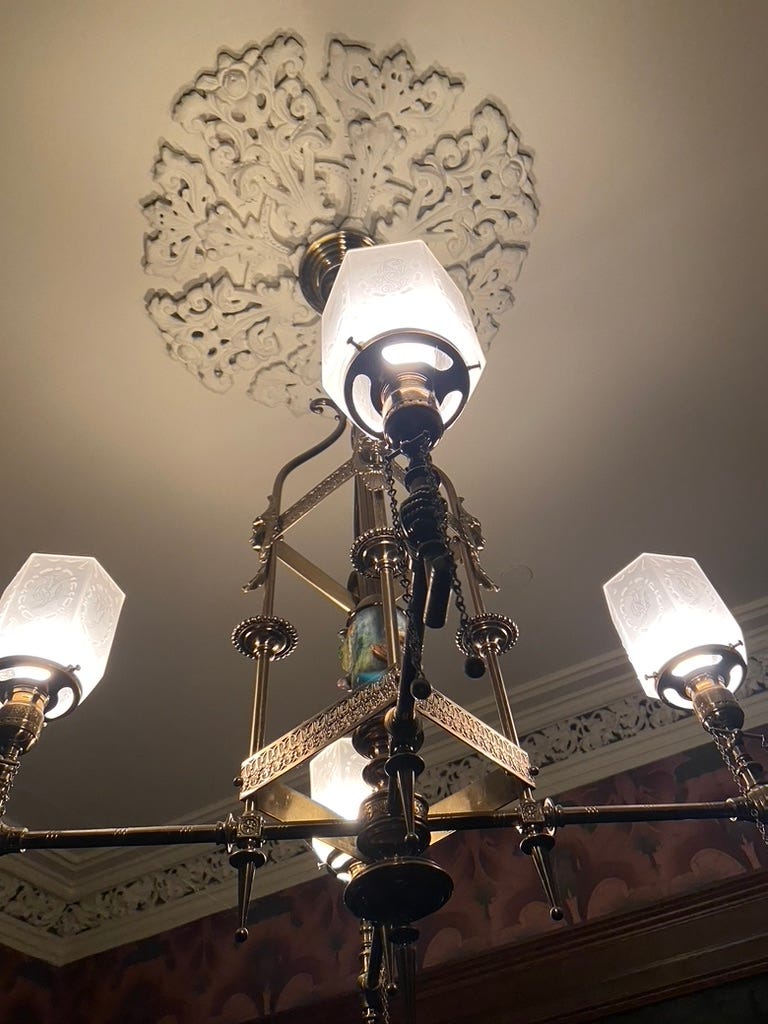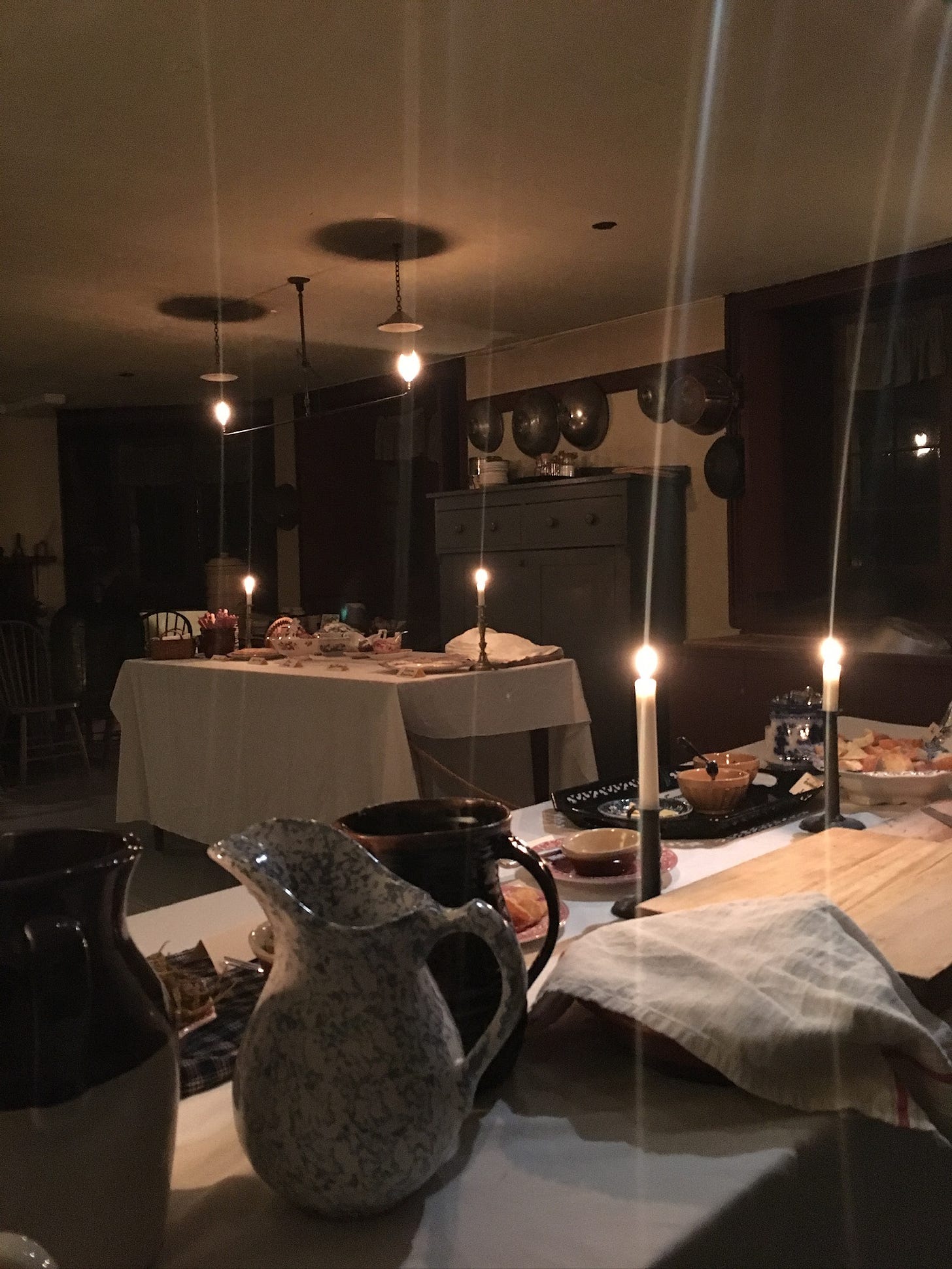Gas light in Hamilton
When I worked in a historic house museum I became interested in domestic lighting, and the history of artificial light. This year I received an arts grant from Hamilton’s City Enrichment Fund to work on a project that features historic lighting technology.
My introduction to gaslight was at Dundurn Castle. The house is restored to 1855, and throughout the home electrified gas light fixtures demonstrate the way it might have looked at that time. There is a working double gas fixture in the basement kitchen. It looks like an upside down letter T, with two gas jets lit without shades. If all of the supplementary modern lighting in the kitchen is off, and the gas fixture is lit, visitors can get an idea of how a room might look and feel when only lit by gas and natural light filtering in through the basement windows. I worked as a historical interpreter and cook at the museum for a brief period, and as I experienced the effect of an overcast day while I cooked on a wood fire in the basement, I started to think about light more and more. How often does a person now spend a significant amount of time without any electric light? No screens, no lightbulbs, no LEDs. To spend stretches of time with natural light, or darkness, or flame light, has become a kind of rare, sensory experience.
In Canada, gas companies were established in various cities in the mid 19th century; Montreal 1840, Toronto 18411 and Hamilton in 18502. The street was lit with gas lamps in Hamilton in 1851, ”attesting to the stature of the city and the traffic on its thoroughfares.”3 Of course Sir Allan McNab had gas light at his home at Dundurn, the newest technology, but before gas light could really become popular in the average person’s home, kerosene lamps became popular due to their portability.4 Gas light was thought to be unhealthy and dangerous.5 In 1857, only 640 houses had gaslight in Hamilton,6 in a population of 25,000.7
The success of kerosene as a lamp fuel temporarily set gas back in domestic lighting.8 But the invention of the incandescent mantle in 1885 gave gas light renewed momentum. A gas mantle is a fabric bag impregnated with metal nitrates. When the mantle is lit the fabric burns away, leaving a fragile oxide shell. This results in a small flame that emits more light than heat, making the lamp safer and producing a more brilliant light. But soon electric light was invented, so it wasn’t popular for long.9
Spadina House, a house museum in Toronto, is restored to the 1920s, when the home had both electric lighting and some gas lights still in use. Since homeowner James Austen was head of Consumer Gas in Toronto, they relied heavily on gaslight in the home. I’ve visited when the museum has lit the remaining gas fixture in the sitting room, but the last time I went it wasn’t lit.
This is another gas fixture from Spadina House hanging in the front hall that was most likely electrified in the 1920s, according to lighting restoration company, Turn of the Century Lighting, who restored the museum’s lighting in 1983. (You can see the condition it was in prior to restoration on their website.) The tubing through which the gas would flow runs from the ceiling through the porcelain centre, and out towards the shades.
Dundurn contains many examples of gas lights. There are many 1850s gasoliers, some with portable lamps connected by a hose, simpler two-light structures, and many wall brackets and swing arm brackets throughout the museum. Turn of the Century Lighting also worked on the fixtures at Dundurn Castle, and according to them “the original gas lines were located in each room with brackets placed in their original locations.” On long-time Hamilton city museum curator Ken Heaman’s farewell tour of Dundurn for historical interpreter staff in 2018, he noted that there wouldn’t have been quite so many gas lights at Dundurn at the time, but in order to have enough electric light for visitors to tour the museum safely, more period lighting was installed than would have been strictly historically accurate. It remains true that Dundurn would have had more interior gas lights than most houses in Upper Canada/Ontario at the time.
Gaslight persisted in Hamilton. After the economic crash of 1857 in Hamilton, one way the municipal government cut costs was to reduce gas lighting on some streets in 1861. One resident wrote “The place is as dark as a dungeon.”10 City directories contain advertisements for gas fitters (as above), and list occupational lamp lighters well into the 20th century.
The 1898 Fire Insurance Plan of Hamilton (above) shows the gas company’s buildings at Mulberry and Bay Street,11 and it looks largely unchanged on the 1911 map.12 In Ontario, domestic gas lighting persisted well into the 20th century, as evident by Eaton’s catalogues selling gas light fixtures into the 1940s.13 The first electric streetlights had been installed by the 1890s.14
The history of artificial light, both flame and electric light, can be very technical and scientific. My interest remains within the domestic space - what did it look and feel like to use a gas lamp to see once the sun went down? Jeanne Minhinnick (1903-1985), author of At Home in Upper Canada, captures this when she wrote of her childhood:
In my father’s Toronto home we kept coal oil and candles on hand, but we used gas for our lighting. At five o’clock in the winter, the halls, dining room, sitting room and most of the bedrooms were lit. The double parlour remained dark, however, unless company was coming. I loved to watch the ritual when the long tapers were taken out of the red and gold boc in the pantry, lit with a kitchen match, and taken through the house to light the gas. On company nights there was the most exciting illumination of all. The whole of the back parlour (from which a door opened on a small conservatory) was lit by gas candles fixed at regular intervals to a cornice a foot or so below the ceiling. Each side of the room had its own gas tap in a little door int he wall. These were turned on, then candle after candle was lit by the long taper until the whole ceiling was dancing with the reflection of tiny flames. The front parlour had a fixture with several etched glass globes over gas mantles, and a cool white light seemed to flow from it into the grey-green room, to be reflected with soft beautiful in the mantel mirrors. [...] The hissing (sometimes delicate, sometimes shrill) and the popping of the gas jets we took for granted, but my grandmother remarked how much more peaceable it had been with coal oil.15
To learn more about gas lighting:
Gas Mantles: Steadier, Brighter, More Efficient Light, video by Greg Yeutter
How the gas mantle made lamps 10X brighter, video by Technology Connections
Gaslit Toronto by Katharine Taylor, One Gal’s Toronto
Turning on Toronto: Setting the Scene, City of Toronto, Web Exhibits









